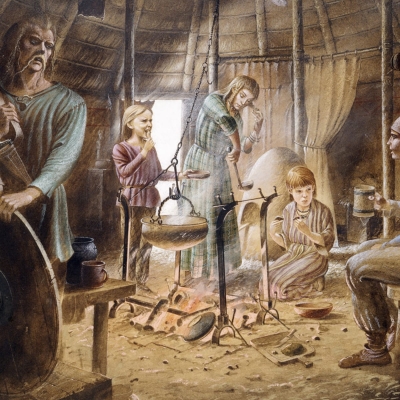
Man may well have discovered the existence of metals by accident. Perhaps one night as he warmed himself by the fire he noticed some of the stones round it begin to melt and flow into a red hot stream. Such a happening would have amazed him. But just as surprising must have been the fact that when this liquid fire cooled it had become hard. It was probably in this way that man first came to produce small quantities of copper, tin and iron and a new era in human progress was born.
Very few metals are found in a pure state in nature: they are usually mixed with other elements. One of the strangest metals is mercury which has an extremely low melting point: it takes a temperature of -39 degree C. to make mercury solidify.
There are metals which are lighter than water and can float in it like pieces of wood or cork. Lithium is one of these metals and its specific gravity is just over half that of water (0.534). It is, in fact, the lightest of all solid elements. Lithium is a white metal with a silvery lustre that quickly tarnishes when exposed to moist air, but it is soft and can only be used as an alloy with lead or aluminium.
Lithium was discovered comparatively recently. It was first isolated in Sweden in 1817 from a mineral known as petalite. The world’s major producers of lithium in order of production are Russia, China, Zimbabwe, the United States and Brazil.
Picture Credit : Google




